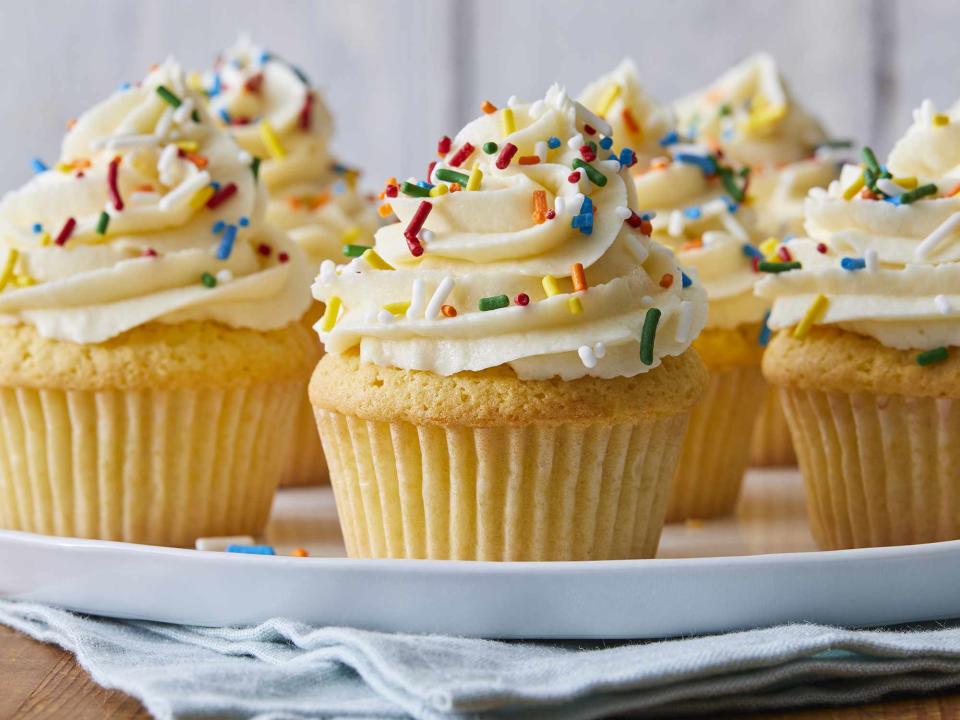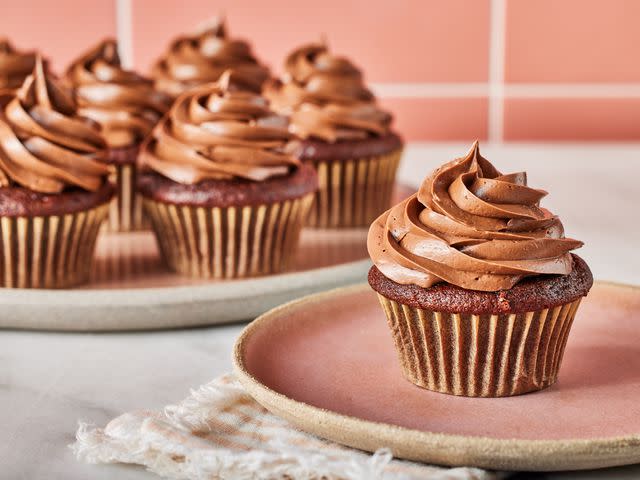Cupcakes vs. Muffins: What's the Difference?
Both domed, handheld baked goods are created using the same pan, but here’s what actually distinguishes one from the other.

When my husband and I were first dating, we were watching a cooking competition show where a contestant, forced to create something tasty in the woods, opted to bake a cake in little tin cups by making an oven in the ground. He turned to me and exclaimed incredulously, "Can you do that? Can you bake a cake in individual cups??"
I responded, "Well… cupcakes…."
I sat back in unbridled joy as the word, and the fact that it was a literal description of the baked good it titled, dawned on him. After I stopped laughing, I inquired what he thought cupcakes were up until that point. His reply: "I don't know... sugar muffins?"
In truth, his assumption was not only entertaining, but fairly accurate. It also raises the question of what exactly distinguishes the two single-serving baked delights. Muffins and cupcakes are made in the same type of pan, in the same shape, using much of the same ingredients. So, does it just come down to sugar content?
It turns out the contrast lies in a few things: flavors, texture, method of preparation, and (yes) a bit of sugar.
What Are Cupcakes?

DOTDASH MEREDITH FOOD STUDIOS
The concept of pouring cake batter, unaltered, into numerous small cups to bake in rather than one larger pan coined the term "cupcakes," literal cup-sized cakes.
Related:Bake the Best Cupcakes With These Easy Tips
Cake/cupcake batter is made using something called a “cake mixing method,” where the batter begins by creaming together butter and sugar. Next, wet ingredients are added followed by dry, beating between and afterward for a longer time. The result is a fluffy, soft, smooth, and even batter. This lighter batter will bake at a lower temp, allowing a slow and uniform rise that produces a smooth, flat top prime for decoration. And cupcakes always have some sort of decorative topping, most commonly frosting. Some have an additional filling element in the center as well, such as extra frosting, compote, Nutella or other chocolate spread, or jam.
Cupcakes have the texture of cake (because they ARE cake), a tight even crumb. Flavors can range from the typical chocolate and vanilla to more creative, utilizing herbs, potato chips, peanut butter, or even bacon.
What Are Muffins?

DOTDASH MEREDITH FOOD STUDIOS
As cupcakes come from cakes, muffins come from bread. More specifically quick bread, a loaf that’s made quickly by using a chemical leavening agent like baking powder or soda rather than yeast.
And as cakes are made from the “cake mixing method,” muffins are made using the “muffin mixing method” — a system of mixing dry ingredients and wet ingredients separately in their own bowls then delicately combining them. This thick, lumpy, much-less-uniform batter bakes at a higher temperature to ensure the muffins cook through before the exterior overbakes. The result is a more dense texture, and akin to bread with a coarser crumb. The tops are uneven and more pronounced, some even crackly or crunchy.
Related:Top Tips From Home Cooks: How to Make the Best Muffins
Muffins are not considered items to "decorate," per say, though they might be topped with a glaze or a crumb/streusel mixture. In general, muffins contain less sugar and often utilize fruit (fresh, frozen and thawed, or dried), nuts, and whole grains. They can also be savory, using cheese, cornmeal, herbs, or vegetables.
Cupcakes vs. Muffins: The Ingredients
Cupcakes and muffins share similarities in their base ingredients of flour, sugar, and fat, but in many cases the commonalities end there.
My husband's moniker "sugar muffin" assumes all cupcakes are sweeter than muffins. This is true — cupcakes have more sugar and fat (oil, butter, or dairy). In fact, the ratio of sugar, fat, and eggs to flour can be up to double that of a muffin.
Muffins are also known to utilize healthy swaps like applesauce in place of vegetable oil, mashed banana in place of eggs, or whole wheat flour, nut flour, or oats instead of all-purpose flour.
In any case, there's more than enough room for both of these small bakes in our lives.

